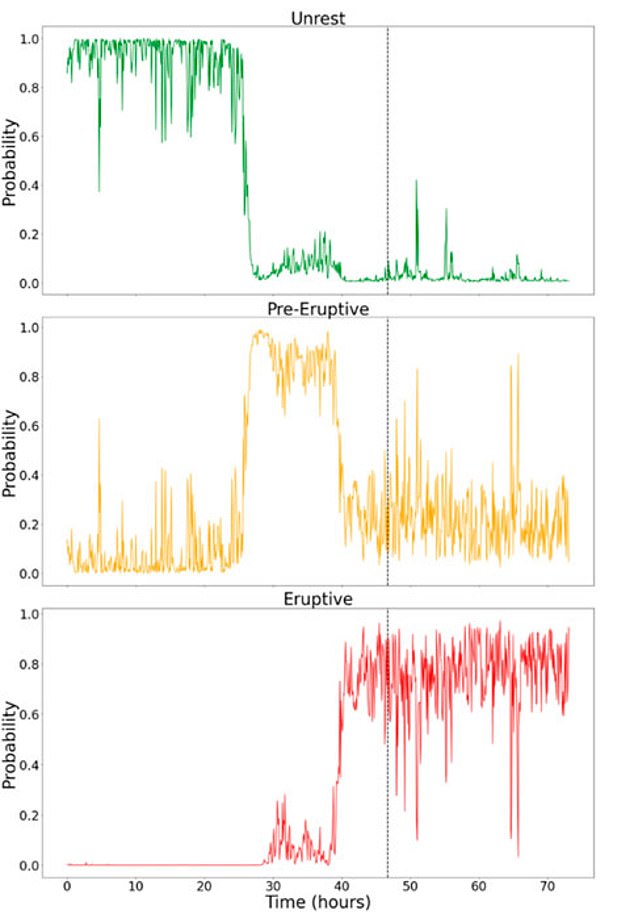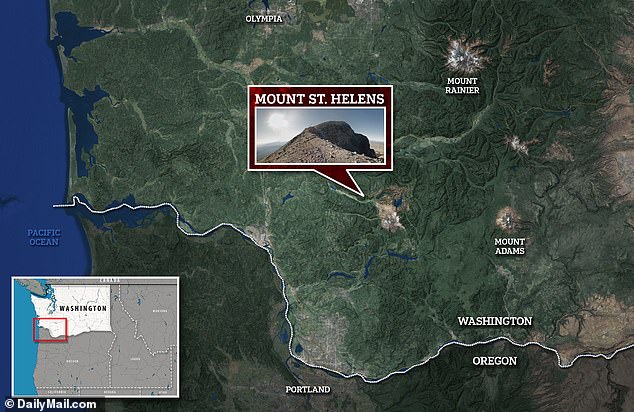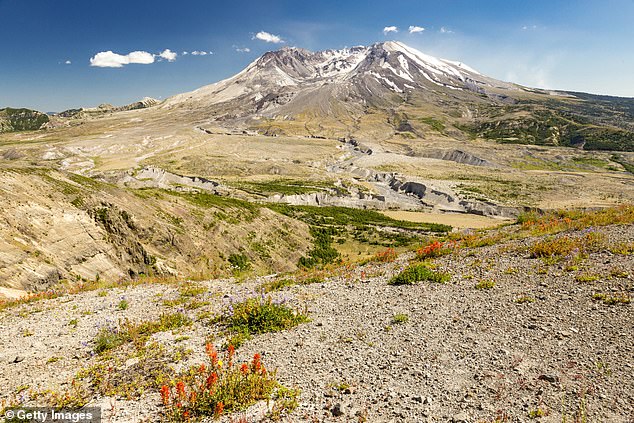New tool predicts Mount St Helens eruptions with 95% accuracy – as America’s most dangerous volcano is recharging
A new technique that analyzes seismic signals to predict days in advance when America’s most dangerous volcano will erupt.
Mount St Helens, located in Washington state, has recently shown signs of recharging, and scientists have developed a machine learning tool to find patterns of volcanic activity to help inform emergency plans.
The system was able to identify when the volcano was restless, and when the volcano was pre-eruption, and when the volcano was erupting.
Using the data, the technology predicted when the volcano would erupt at least three days in advance – with 95 percent accuracy.
The survey was conducted less than 10 days after the Pacific Northwest Seismic Network announced it had detected 350 earthquakes in the region since February. These are signs that the volcano may be awakening.
A new technique analyzing earthquake signals from Mount St Helens could predict when America’s most dangerous volcano will erupt days before it happens
Earlier this month, experts recorded 38 earthquakes around the 8,000-foot-high volcano — many of them occurring as far as 4.6 miles (7.4 kilometers) beneath the crater floor.
Specialized equipment has also discovered that magma has flowed through deep underground chambers, charging the volcano.
There are fears the quakes could trigger another massive explosion similar to the 1980s eruption that killed 57 people and permanently damaged the area’s ecosystem.
But scientists from the University of Granada in Spain have discovered a way to predict a future eruption.
The machine learning tool analyzed all seismic signals during Mount St Helens’ activity and revealed patterns in its progression from one phase to another, as well as changes that indicate the volcano could be transitioning from restless to pre-eruptive .

Scientists have identified twelve parameters using a new machine learning tool, allowing them to create a timeline of past volcanic activity and observe patterns that signal unrest, pre-eruptive and eruptive periods
That data showed that signs of the eruption included tremors, which have been observed this year, and significant accumulation of magma and pressure buildup.
The 2024 earthquakes are thought to be caused by pressure in the magma transport system, which in turn is caused by the supply of additional magma, a process called ‘recharging’.
The pre-eruption signals also led to Mount St Helens erupting in 2004, when a plume of ash and steam was sent 3,000 meters above the surface.
“This is a reliable numerical value to confirm the probability of a volcanic eruption in the short term and would improve monitoring of a volcanic system and the ability to predict an eruption,” the team shared in the journal Frontiers in Earth Sciences.

Earlier this month, experts recorded 38 earthquakes around the 8,000-foot volcano in Washington state — many of them striking about 4.5 miles below the crater floor.

The system predicted when the volcano would erupt at least three days in advance – with 95 percent accuracy
‘The probability of being in an eruptive state typically rises to 80 percent when a volcanic eruption is about to begin, demonstrating the methodology’s potential as a universal monitoring tool.’
For the study, the team used mathematical formulas to analyze parts of the earthquake signals. This allowed them to calculate four key features: energy, a measure of predictability, how sharp the signal peaks are, and changes in signal frequency.
This data was then classified into three states. By unrest we mean a situation in which a volcano shows activity, but not activity indicative of an eruption.
Pre-eruptive was the next category, meaning there is a high probability of eruption and subsequent eruption, when the volcano explodes.
And the machine learning tool went to work uncovering the patterns, which the team ran five times to ensure accuracy.
In 1980, small earthquakes were recorded around Mount St. Helens just before the deadly eruption.
On May 18, 1980, residents flooded the area as they sat in open fields and on rooftops as rumors of a volcanic eruption spread. Millions of people around the world waited two months to see what would happen.
But that morning, at 8:32 a.m., the results proved deadly when a magnitude 5 earthquake struck, causing the volcano to lose its crypto dome and erupt.
Those in the area had nowhere to take cover.
The volcano erupted sideways, causing a massive landslide of a super-hot mix of ash, rock fragments and gas flowing downhill.
The ash and gas rose and blocked the sun, turning the sky completely dark.
